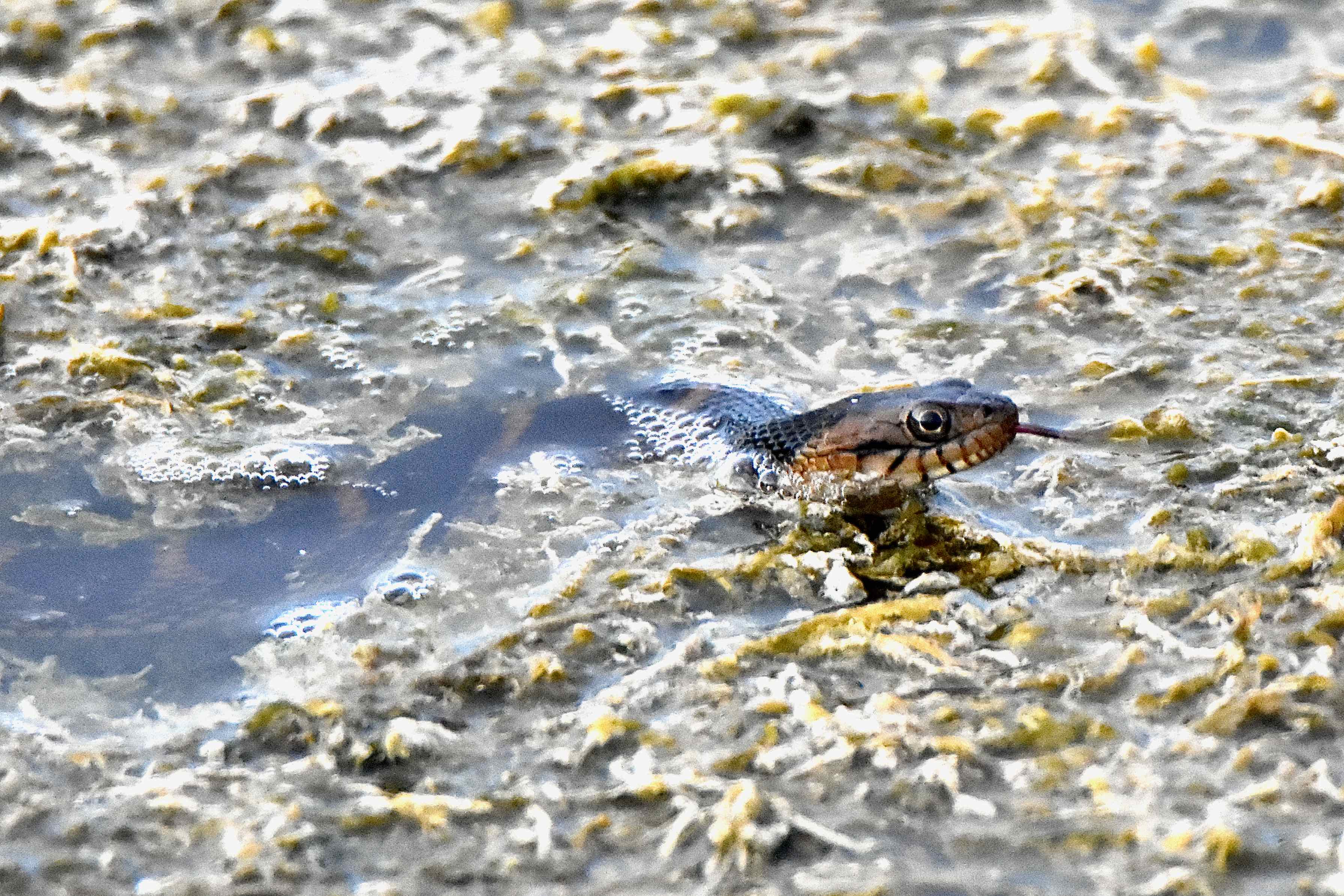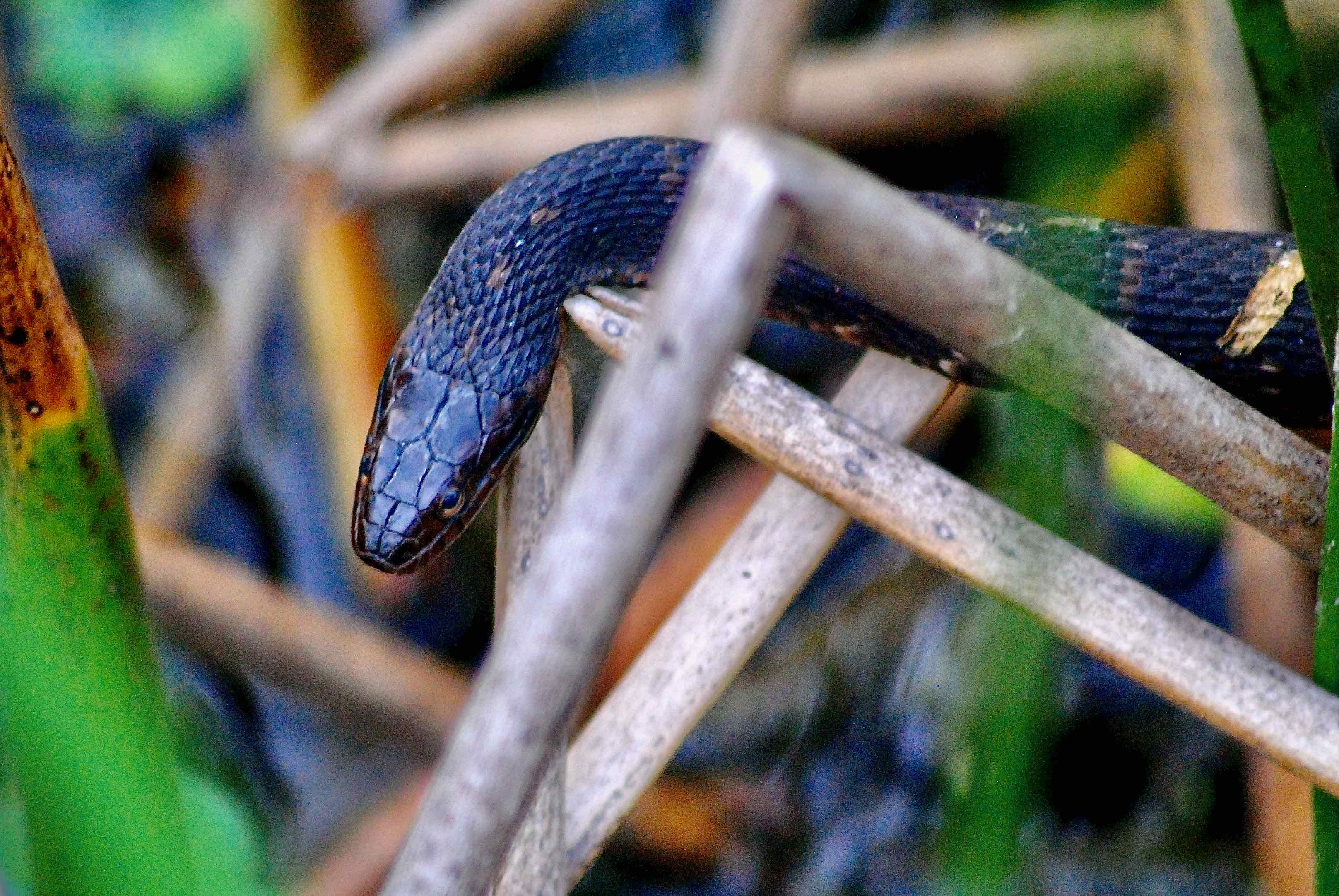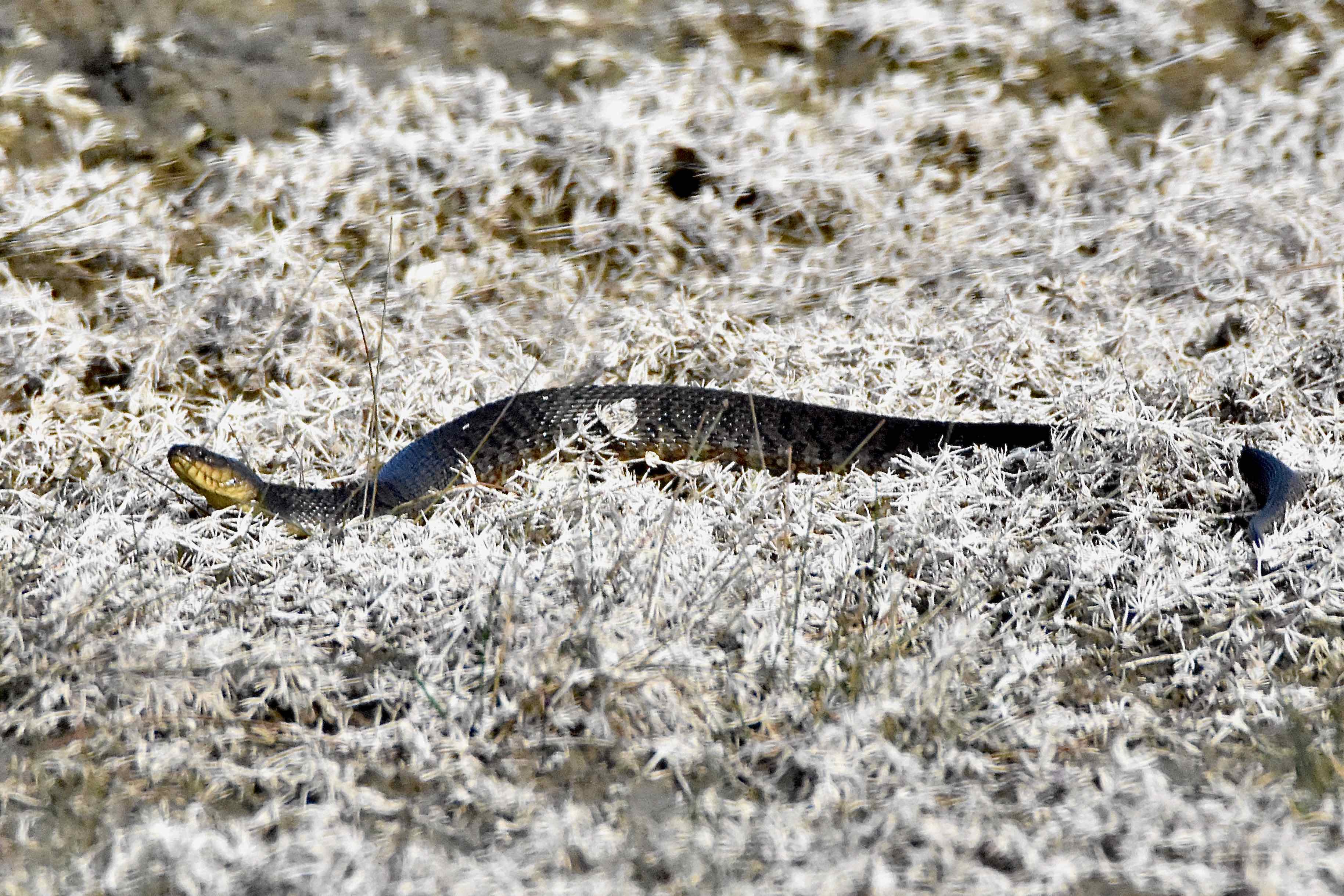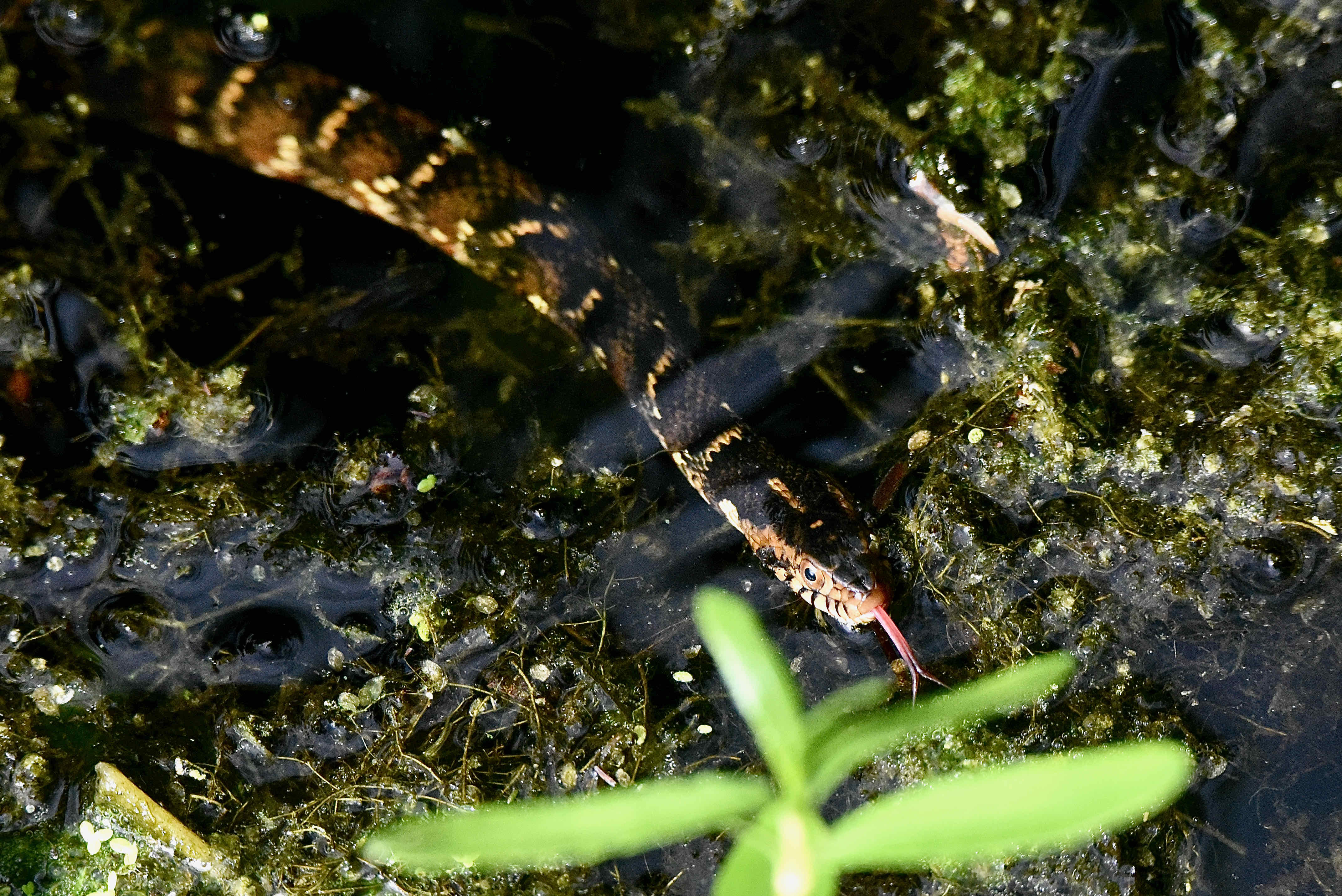
Florida water snake, photographed at Green Cay Nature Center, Boynton Beach, Palm Beach County, in July 2017.
Spend any time around the freshwater habitats of Florida and there's a pretty fair chance that sooner or later you'll encounter this guy, the southern water snake. But don't be alarmed; he's harmless.
Unfortunately for the snake, too many people believe otherwise, that what they're seeing is a cottonmouth — which is seriously venomous — even though the two species look nothing alike. More on that in a bit. But first, some nuts and bolts.
Actually there are two subspecies of southern water snake in Florida — the banded water snake, Nerodia fasciata var. fasciata, found in the western counties of the Panhandle, and the variety seen on this page, the Florida banded water snake, N. f. pictiventris, which calls the Peninsula home. It is not found in the Keys, however. There is a third subspecies, the broad banded water snake but it has a more western range that doesn't include Florida. All three subspecies are nonvenomous.
Southern water snakes are found in the southeastern United States along the Gulf and Atlantic coastal plains from Texas to the Carolinas and as far inland as western Tennessee. The Florida water snake's range sneaks into southeastern Georgia. They are small- to medium-sized snakes, typically anywhere from two feet to three-and-a-half feet long. The record for the Florida water snake is 62.5 inches; the record for the banded water snake is 60 inches. They are dark colored overall, with black, brown or even red cross bands.The cross bands are quite evident in juveniles, but become less so as the snake ages. They have a round pupil and a dark stripe that extends from the eye to the angle of the jaw.
Their habitats include just about any freshwater body of water — swamps, ponds, marshes, canals, streams and rivers. They have little tolerance for salt water. But being in water, too many folk when they see a southern water snake, assume it to be the feared cottonmouth and kill it out of hand. However, there are sharp differences in the looks of the two snakes that should eliminate any confusion. For one, the cottommouth's head is distinctly triangular, much wider at the base, becoming sharply narrower at the face. The southern watersnake's head narrows gently from the base to the front of the face The pupils of the cottonmouth are vertical like those of a cat; they're round on the water snake, as seen in the photos. Also, when viewed from above, the eyes of the cottonmouth can't be seen; they're clearly visible on the water snake. For more, check the link.
More nuts and bolts: Southern water snakes are born live; In Florida breeding season is mid-winter into spring, with mom giving birth late spring into summer. Gestation period: 79 days. Young water snakes are 7.5 to 10.5 inches long at birth. They are sexually mature at two or three years old, and have a life span of seven or eight years in the wild. Captive water snakes seem to have a much shorter life, oddly enough.
A good meal for a water snake: mostly fish and frogs, but that changes as they age. Fish are predominant in young water snakes, becoming mostly frogs in older ones.
Water snakes will bite vigorously in order to defend themselves — we watched one fend off an attack by a sandhill crane by vigorously snapping at it. The bird quickly got the idea that there were easier meals to be had. They'll also emit a foul-smelling musk, sometimes mixed with poop.
There is a population of Florida water snakes in south Texas. In 1933 an animal dealer named the Snake King possessed a number of the critters and had them in cages. Unfortunately for the Snake King, a hurricane came along and destroyed his cages and let the water snakes loose into the wild. There's also a population that somehow established itself in California's Los Angeles and Sacramento counties. Theories on how they got there include accidental transport via the military or commercial heavy equipment, or simply pet owners dumping unwanted animials.
Southern water snakes are members of Colubridae, the family of constrictor snakes.



